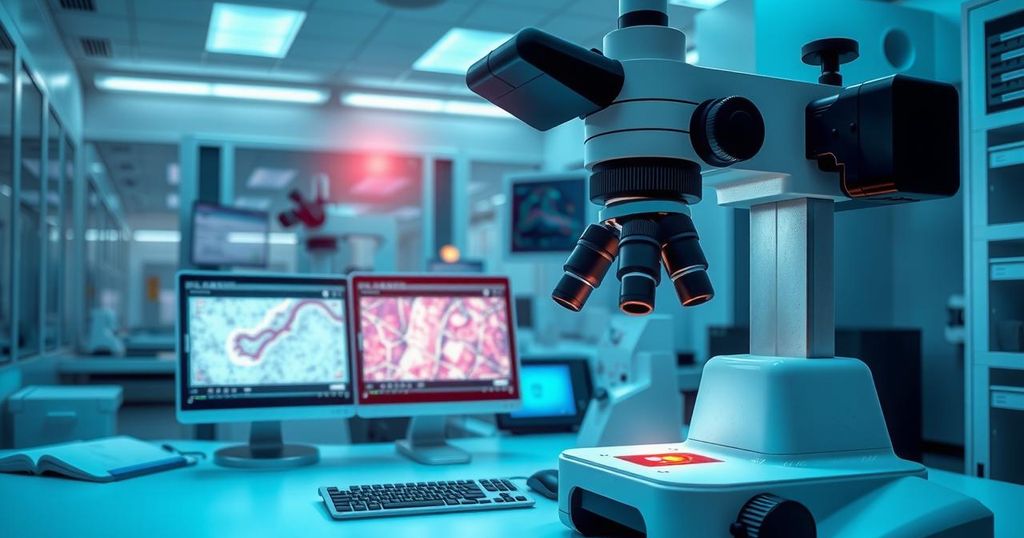Artificial Intelligence Speeds Up Diagnoses of Some Cancers
UC San Diego researchers have developed an AI tool that rapidly diagnoses breast and ovarian cancers by evaluating biopsy images, potentially streamlining treatment initiation. The model detects homologous recombination deficiency (HRD) and boasts a significantly lower failure rate than current genomic testing methods, paving the way for quicker, more effective cancer management.
When a cancer diagnosis comes knocking at the door, time becomes the enemy. UC San Diego researchers have unveiled a promising solution using artificial intelligence to expedite the biopsy process, especially for breast and ovarian cancers. Ludmil Alexandrov, a professor at UC San Diego, emphasizes the dire wait patients face, often enduring weeks before crucial genomic test results are available. These tests are vital for identifying gene activity in tumor tissue and determining the best treatment pathway; any delay could prove fatal.
AI technology stands to revolutionize the standard approach to these biopsies. For patients diagnosed with breast or ovarian cancer, genomic tests reveal if their tumors contain homologous recombination deficiency (HRD)—a serious condition that inhibits a cell’s ability to repair DNA breaks, thus increasing tumor aggression. Research led by Alexandrov and Erik Bergstrom, a postdoctoral researcher, highlights how a new AI tool can provide immediate insights on HRD status right at the biopsy stage.
The study harnessed digital tissue slides from 1,008 breast and 459 ovarian cancer patients sourced from The Cancer Genome Atlas project. By employing a deep-learning AI system known as DeepHRD, researchers trained the model to predict HRD positivity through the analysis of routine biopsy images. It’s worth noting that traditional pathologists don’t have visual tests to confirm HRD biomarkers. Nevertheless, this AI model unveils microscopic changes in tissue structures, ultimately offering a precise status of the tumor.
According to Bergstrom, “The AI tool essentially picks up these hidden features that are too complex for the human eye to pick up.” These intricate details help determine whether the tumor presents an HRD issue, leading to potential advantages in treatment decisions. Additionally, Alexandrov points out that this AI approach boasts a remarkably low failure rate, unlike current genomic tests, which can be unreliable, averaging failure rates of 20% to 30%, requiring follow-up tests or invasive procedures.
The implications are profound: with this AI model in hand, oncologists could immediately initiate treatment following the initial diagnosis. Even more impressive, this image-based analysis outperforms FDA-approved genomic tests by successfully identifying ambiguous cases that genomic sequencing can overlook. There’s hope that future research will expand the effectiveness of this method to other cancer types, including pancreatic and prostate cancers where HRD is also relevant.
In summary, the UC San Diego research team is paving a novel pathway for quicker cancer diagnoses using artificial intelligence. This new AI tool is breaking down the barriers of traditional genomic tests, providing patients with critical information while potentially saving lives. The future of cancer treatment could very well hinge on this groundbreaking technology, as researchers aim to expand its capabilities across various types of cancer.
Original Source: today.ucsd.edu




Post Comment